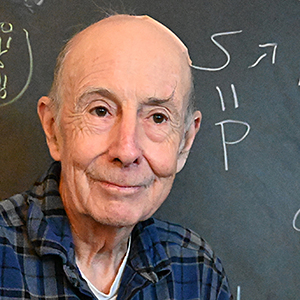
Light and dark are underappreciated environmental exposures that can affect human health in numerous ways, and now is the time to study the exact biological changes they can trigger because doing so will help to advance individualized medicine, according to this month’s Director’s Corner guest, Mariana Figueiro, Ph.D.
At the annual meeting of the Environmental Mutagenesis and Genomics Society in September, I was fascinated by her keynote talk on how light-dark patterns influence circadian rhythms. Figueiro discussed her work to develop light interventions for patients in clinical settings, and she explained why scientists should incorporate more light-dark analysis in their studies.
After the conference, I caught up with Figueiro — professor in the Department of Population Health Science and Policy at the Icahn School of Medicine at Mount Sinai, and director of the school’s Light and Health Research Center — to learn more about the state of the science on how light and dark affect health. She also described her career and shared how she became interested in these often-overlooked exposures.
Keeping us in sync
Rick Woychik: What should people know about light and dark exposures?
Mariana Figueiro: Light and dark patterns that we experience are the major synchronizers of our circadian rhythms. These rhythms are critical to much of human biology — they exist throughout our bodies, and they link us to the external environment. Light-dark patterns keep us in sync, ensuring that our bodies do the right thing at the right time.

Disruption of circadian rhythms has been linked to a series of maladies, from poor sleep and poor cognitive performance all the way to increased risk for diabetes, obesity, cancer, and cardiovascular disease. So, it is very important to maintain healthy circadian rhythms.
Lighting is the most important factor for the circadian system, and yet it is the least appreciated and understood element of the whole system. If you take a drug, your physician will never tell you, “Oh, just take a handful of pills.” Rather, your physician will tell you the precise dosage, how many times a day to take the drug, and at what time during the day. But we do not have that level of precision yet with lighting, despite its profound impact on our circadian system.
The fact that each person has a unique biological, genetic, and epigenetic makeup is important to consider. To start to identify individualized interventions that promote better health outcomes, we need to better understand individual variation in how people respond to light-dark patterns.
Individuals respond differently
RW: Can you talk more about that individual variation?
MF: We know that adolescents are more sensitive to blue light in the evening than middle-aged adults. In addition, kids five to 10 years of age are more sensitive to light than other adolescents. So, there are differences among age groups, but we are also learning that there may be sex differences. Specifically, women appear to be more sensitive to light than men. Nevertheless, we are at the very beginning of understanding these differences in individual responses to light, and much more research is needed in this area.
I often say that when you are hungry, you know you are hungry because your stomach growls, but you don't receive a similar signal when you need light, and you don't know if you are sensitive to it. Even though much more work is needed to uncover the specific light-dark mixture that is ideal at the individual level, we know that in general, we want people to have as much light as possible during the day and as little light as possible at night.
Light exposure from being outdoors is very beneficial. Even on a cloudy day, you have 10-20 times more light than you get in the built environment, such as an office. Humans are designed to get a lot of light in the day, but in general, we aren’t. And that impacts how sensitive we are to light at night. I think we can minimize that impact if we increase light exposure during the day.
Key hormone influenced by light exposure
RW: What role does melatonin play in all of this?
MF: Melatonin is a hormone we produce at night and in darkness. We do not produce melatonin during the day or in very bright light at night.
What is very interesting about melatonin is that it acts like a timing messenger for the body. It travels through the blood and basically tells every part of your body that it's nighttime. The body then transitions from a daytime mode to a nighttime mode, which facilitates sleep.
Another reason that melatonin is important is that it can help to reduce DNA damage and strengthen DNA repair. So, it’s a very important hormone not just for the timing aspect but also for its ability to ward off biological changes that can pave the way for cancer.
Expanding research, tackling challenges
RW: One of your goals is to expand research into how light-dark cycles affect health. What would you like to share with scientists who may be interested in this topic?
MF: I think light-dark patterns that we experience are a critical but often-overlooked exposure. A lot of studies have examined light at night and cancer outcomes in the context of rotational shift workers, but many other important questions should be explored. For example, I think there should be more research into how prenatal light-dark exposure patterns affect health across generations, which gets to the idea of developmental origins of health and disease.
My general suggestion would be to incorporate light-dark exposure analysis in every cohort you have and in every exposure measurement you do. Use a calibrated light meter to measure light exposure across the 24-hour day. Recently, my colleagues and I have started to look at the correlation between light-dark exposure and rest and activity patterns. We have shown that it is possible to predict diabetes outcomes with great accuracy based on an individual’s exposures, and we are excited about expanding research in this area.
Also, I recommend that scientists strive to make studies involving rodent models as relevant as possible in human contexts, which is sometimes difficult because rodents respond differently to light than humans do, and they are much more sensitive. Sometimes, lighting for rodents in lab settings is the equivalent of many suns, which could be reducing the translatability of some findings. One baseline suggestion is to try to at least use controlled lighting systems where you don’t have different light exposure based on what cage in the laboratory the rodent is in.
Light interventions improve mood
RW: Any final thoughts for Environmental Factor readers?
MF: I would just point out that research in this area is very promising, and I would encourage the environmental health sciences community to branch out into this area whenever possible.
At the Light and Health Research Center, we have been working with Alzheimer's patients and Parkinson's disease patients. We have seen that when patients experience robust light-dark patterns, meaning plenty of light during the day and minimal night at night, there are significant reductions in depression and improvement in mood. We have added light to people's space during the day, and the intervention has been very successful for our patients.
(Rick Woychik, Ph.D., directs NIEHS and the National Toxicology Program.)









